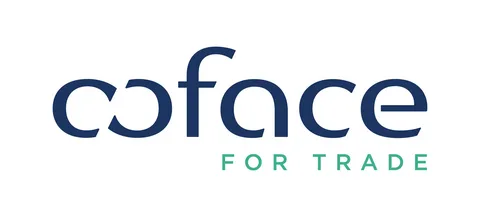Over the past several years, the insurance brokerage market has seen strong and steady growth. Revenue, profitability, and shareholder value have all climbed, thanks to supportive economic conditions. Mergers and acquisitions (M&A) have been especially active, fueled by easy access to low-cost capital and the reliable cash flow typical of the industry.
At the same time, brokers have enjoyed solid organic growth, helped along by rising insurance rates and inflation pushing up exposure levels. With high valuations and a strong capital market, shareholders—including private equity sponsors and employees—have seen impressive returns, capped off by a record number of transactions. But the winds are starting to shift.
Rising interest rates, sky-high valuations, and tighter capital availability are creating real challenges. M&A activity has slowed, with deal volume down roughly 30% in the first eight months of 2024 compared to the same period in 2023. Still, M&A remains an important play for brokers who want to stay competitive and maintain strong relationships with insurance carriers.
On the organic side, the rapid growth many brokers enjoyed—averaging 8 to 9% annual revenue growth—has started to ease as rate increases in some property and casualty (P&C) lines begin to level off. And with the average revenue of the top 100 private equity-backed brokers nearly doubling over the past four years, it now takes more capital than ever to deliver liquidity events for the largest players in the market.
Bringing More Standardization and Integration to the Table
Many brokerages today still operate under a very decentralized model—more like a collection of independent agencies than a single, unified business. While that setup can offer flexibility and encourage an entrepreneurial mindset, it often comes with some headaches. Think: inconsistent operations, disconnected tech systems, scattered data, and challenges with governance and control.
As the industry continues to change, more brokerages are realizing the value of standardizing their operations and integrating their systems. This means rethinking how the business is run across the board—from defining common terms to redesigning core processes in a way that ensures better quality and stronger oversight.
Technology plays a huge role in making this work. A connected tech ecosystem that links business areas and teams helps ensure data flows smoothly and consistently across the company. It also creates a single source of truth—one reliable place to understand what’s happening and make informed decisions.
Ultimately, tighter integration and more standardized ways of working help brokerages run more efficiently and unlock better insights. And those insights? They’re the key to smarter strategies and sustained growth.
Unlocking Efficiency and Smarter Growth Through Integration
Bringing more structure and integration into a brokerage’s operations isn’t just about tightening up processes—it’s also a smart way to boost performance and protect margins. Here’s how it helps:
1. Streamlining the Back Office
When brokerages adopt standard operating procedures and tighter integration, they can centralize many of the behind-the-scenes tasks like accounting, IT, and HR. By moving these non-client-facing functions out of individual agency offices, teams can focus more on what really matters—serving clients and growing the business.
2. Smarter Spending Through Procurement Optimization
Every new agency that’s acquired often brings along its own stack of software licenses and vendor relationships. By integrating systems and vendors across the organization, brokerages can simplify all that complexity. This not only reduces costs by taking advantage of bulk purchasing power but also helps avoid waste from duplicate tools and one-off tech fixes that don’t scale.
3. Better Decisions Through Better Data
With accurate and consistent data in place, leaders can manage the business based on real insights—knowing exactly what’s being measured, why it matters, and how day-to-day actions impact results. This makes it easier to make focused, confident decisions that drive results instead of relying on gut instincts or broad, vague changes that risk hurting margins. Plus, it creates clear accountability across the board and ensures everyone knows what data needs to be captured and why.

Finding New Paths to Growth
With M&A activity facing tighter conditions and pricing tailwinds starting to slow down, brokerages need to get more creative and strategic about how they grow. That means focusing more on organic growth—and data can be a huge driver here.
Tools like Generative AI can help brokers uncover new revenue opportunities, like spotting where cross-sell or up-sell chances exist across their book of business. It’s all about using smarter insights to support revenue-generating teams and keep growth moving forward.
Beyond that, brokerages should look at investing in areas that add real value—whether that’s acquiring firms that offer new products or help expand into new regions, scaling up in current markets, or even considering vertical integration to take more control over the value chain.
Specialization is also becoming a powerful way to stand out. We’re seeing more brokers carve out niches in specific industries, often tying in with MGAs or forming affinity partnerships to become the go-to choice in those spaces.
And let’s not forget the fast-growing E&S (excess and surplus) market. It’s opening the door for brokerages to branch into wholesale and tap into multiple revenue streams—especially when it comes to complex risks and tougher coverage areas.
Building Strong Foundations and Growing the Right Talent
As brokerages work toward becoming more integrated and efficient, the kind of leadership they need is starting to shift. It’s no longer just about being a great salesperson—it’s about being a strong operator. The focus is moving toward leaders who can manage teams, drive change, and help the business evolve while still delivering solid value for shareholders.
This means finding leaders who can handle things like streamlining operations, upgrading technology, and attracting top talent. These skills are still relatively new to many in the brokerage world, so bringing in the right people—or developing them internally—is more important than ever.
It’s especially tricky in brokerages that still operate in a more federated model, with a mix of corporate offices, regional teams, and independent agencies. Leading transformation across all those layers takes a special kind of influence and a real understanding of how to connect the dots.
Bottom line: investing in foundational capabilities and fresh leadership talent isn’t just smart—it’s essential for staying competitive in a changing market.While bigger, long-term changes will need strong coordination from the C-suite, there are some simple, high-impact steps brokerage leaders can take right now to start moving in the right direction:
1. Start Standardizing and Centralizing Where It Counts
If your brokerage is more fragmented, begin by targeting easy wins—like standardizing basic data entry processes (think: AMS procedures) and moving toward using a common technology platform. From there, look to centralize low-risk back-office tasks like vendor payables, data processing, policy certifications, and claims handling. These steps help build early momentum and show real results that can make it easier to get buy-in for bigger changes down the road.
2. Revisit Your M&A Strategy
It might be time to take a fresh look at your M&A goals. Focus on deals that clearly support your long-term growth strategy and align with your core business. At the same time, consider whether it makes sense to divest areas that no longer fit—this can free up capital and help you shift from a holding company mindset to becoming a more unified operating company.
3. Clean Up Data and Reporting Gaps
Many brokerages still struggle to pull together clear reports due to scattered systems and messy data. Take stock of your current systems (like how AMS connects with your finance tools), and map out how data flows across the organization. Start by standardizing the way you do financial and operational reporting—this sets a strong foundation for better insights and smarter decision-making later.
4. Identify and Fill Key Talent Gaps
To really bring these changes to life, you need the right people in place. Look at where your biggest talent gaps are—maybe it’s transformation leaders, skilled business operators, data pros, or industry experts—and build a plan to fill those roles. Having the right team makes all the difference when you’re working to future-proof your brokerage.





